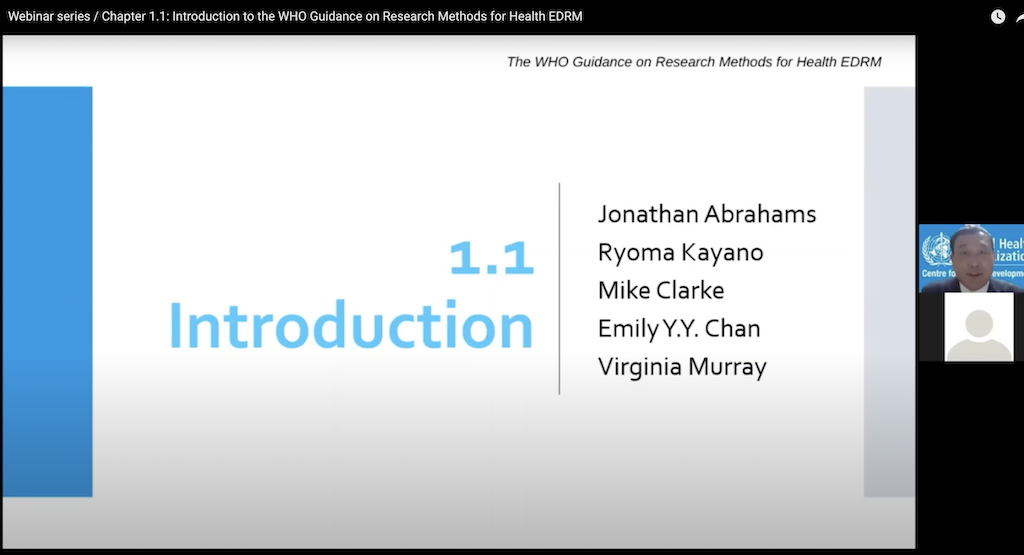Section 1: Introduction

Chapter 1.1 Introduction
Chapter 1.1 introduces the rationale, context, and structure of the WHO Guidance on Research Methods for Health Emergency and Disaster Risk Management.
…

Chapter 1.2 Background
Chapter 1.2 introduce the WHO health emergency and disaster risk management (Health EDRM) Framework and the role of research in Health…

Chapter 1.3 Historical developments in Health EDRM policy and research: the case study of Japan
Chapter 1.3 describes the importance of research evidence for health emergency and disaster risk management (Health EDRM) policy and practice, considering Japan as a case study. It aims to…
Section 2: Identifying and understanding the problem
Chapter 2.1 Using epidemiological principles to assess impacts of emergencies and disasters
Adequate description of the impact of a disaster, or any other significant health event, is a challenge. Epidemiological research describing both the causes and consequences of disasters can help…
Chapter 2.2 Measuring the health impacts of disasters
Measuring the health impacts of disasters is a challenge. Indicators and systems are available to help decision-makers characterize the health impacts and risks of emergencies and disasters.
…Chapter 2.3 Disease burden: generating evidence, guiding policy
Disasters and other health emergencies cause substantial disability and mortality and it is important to have reliable evidence on these impacts. Understanding the basic concept of disease burden…
Chapter 2.4: Databases and registers as tools for disaster epidemiology
Chapter 2.4 describes the three major types of databases and registers available to disaster epidemiology researchers, and their associated strengths and weaknesses by:
- …
Chapter 2.5 Identifying and engaging high-risk groups in disaster research
Identifying high-risk groups and engaging them in Health EDRM research is a challenge. Understanding how to identify and support these groups can help researchers to deliver reliable evidence for…
Chapter 2.6 The current state of the evidence: Mapping the evidence and systematic reviews
Optimal application of sound and effective interventions in disasters and other health emergencies requires reliable and robust evidence from research. Systematic reviews of good quality research…
Chapter 2.7 Prioritization of research
Chapter 2.7 describes the key factors to consider when preparing, developing and evaluating a research prioritization exercise in health emergency and disaster risk management (Health EDRM),…

